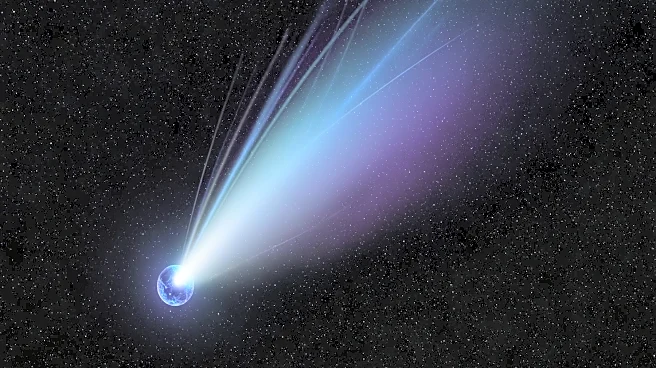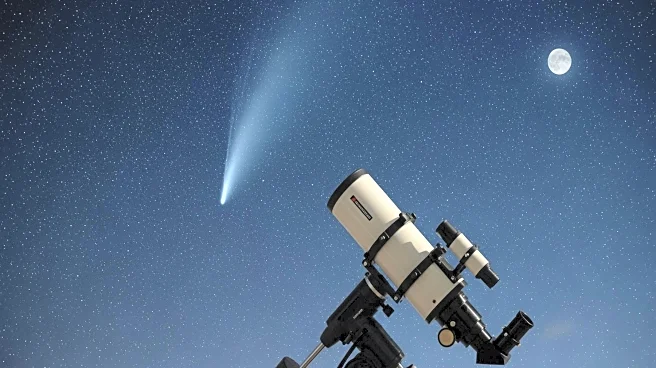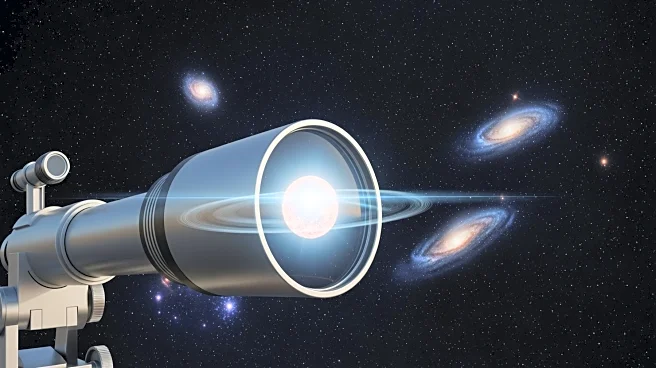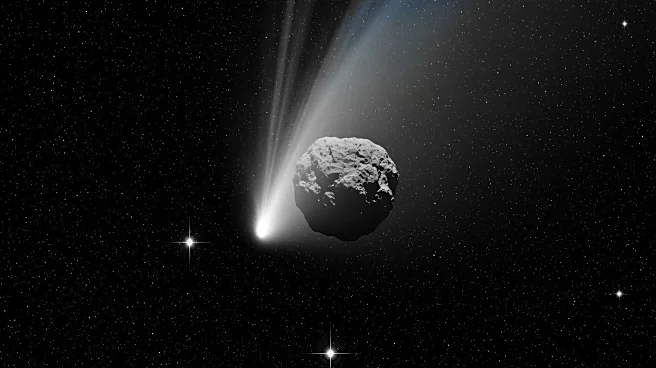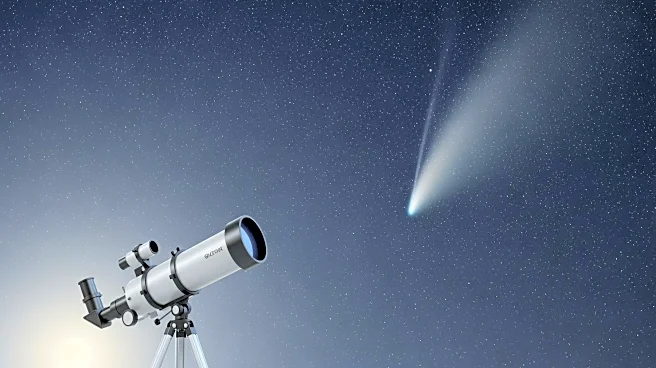What's Happening?
Recent observations have indicated that the interstellar comet 3I/ATLAS may be undergoing a color change, developing a faint blueish hue. This follows a rapid and unexpected brightening event while the comet was
obscured behind the sun. This marks the third time a potential color change has been noted, although previous changes have not persisted. The comet, which is the third-known interstellar object to visit our solar system, was initially observed traveling towards the sun at high speeds. After a close approach to Mars, it became largely unobservable from Earth but is now becoming visible again to telescopes. The comet reached its closest point to the sun on October 29, and researchers have noted a significant brightening that cannot be fully explained by its proximity to the sun. The blue hue is thought to be caused by gases such as carbon monoxide or ammonia leaking from the comet.
Why It's Important?
The potential color change of 3I/ATLAS is significant as it provides insights into the composition and behavior of interstellar objects. Understanding these changes can help scientists learn more about the materials and processes that occur in comets from outside our solar system. The comet's behavior, including its color changes and brightening, could offer clues about its origin and the conditions in its home star system. This information is valuable for astronomers and researchers studying the formation and evolution of celestial bodies in the universe. The comet's visibility to Earth-based telescopes in the coming weeks will allow for more detailed observations, potentially leading to new discoveries about interstellar comets.
What's Next?
As 3I/ATLAS becomes more visible to observers in the Northern Hemisphere, researchers will have the opportunity to study it in greater detail. The comet is expected to reach its closest point to Earth on December 19, allowing for further analysis. Two European Space Agency spacecraft may also pass through the comet's tail, providing additional data. Continued observations will help determine if the blue coloration persists and what it reveals about the comet's composition. The scientific community will be closely monitoring these developments to enhance understanding of interstellar objects.
Beyond the Headlines
The study of 3I/ATLAS and its unusual traits, such as high levels of carbon dioxide and water leakage, could have broader implications for understanding the impact of cosmic ray bombardment on celestial bodies. This research may also contribute to the knowledge of how interstellar objects interact with our solar system, potentially influencing future space exploration and the search for extraterrestrial life.
